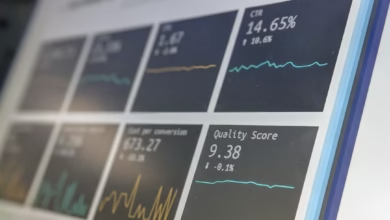Mastering Futures Trading: Essential Strategies and Comparisons with Other Trading Methods

Futures trading is a dynamic and sophisticated approach to investing that allows traders to enter contracts for the delivery of assets at a predetermined future date. As a pivotal form of derivatives trading, futures trading is popular among both institutional and retail traders, offering a unique opportunity to capitalize on price fluctuations in various markets, including commodities, stocks, and indices. Unlike traditional stock trading or forex trading, futures contracts provide leverage, enabling traders to control larger positions with a smaller amount of capital.
In this article, we will delve into the essentials of futures trading, providing a comprehensive overview of how trading contracts work and the significance of asset delivery. We will explore key strategies that are crucial for successful futures trading, emphasizing the importance of risk management and technical analysis in navigating this complex landscape. Moreover, we will compare futures trading with other popular trading methods, such as options trading, day trading, and swing trading, to highlight unique advantages and potential drawbacks. Whether you are a novice looking to understand the basics of online trading platforms or an experienced trader seeking to refine your trading strategies, this article will equip you with the knowledge necessary to thrive in the exciting world of futures trading.
- 1. Understanding Futures Trading: An Overview of Trading Contracts and Asset Delivery
- 2. Key Strategies for Successful Futures Trading: Analyzing Risk Management and Technical Analysis
- 3. Comparing Futures Trading with Other Methods: Insights into Options Trading, Forex Trading, and Day Trading
1. Understanding Futures Trading: An Overview of Trading Contracts and Asset Delivery
Futures trading is a form of derivatives trading that allows traders to buy or sell contracts for the delivery of assets at a predetermined future date. This method of trading is prevalent among various asset classes, including commodities, stocks, and cryptocurrencies. Understanding the intricacies of futures trading is essential for anyone looking to engage in this dynamic market.
At its core, futures trading involves entering into a contract that obligates the buyer to purchase, and the seller to sell, an asset at a specified price on a set date in the future. This mechanism provides a way to hedge against price fluctuations or to speculate on price movements. For example, a trader engaged in commodities trading might use futures contracts to lock in prices for agricultural products or energy resources, effectively managing their risk exposure.
Futures trading differs from options trading, where the buyer has the right but not the obligation to make a transaction. In futures, both parties are bound to fulfill the contract, which adds a layer of commitment and risk management. Traders can utilize various strategies, such as day trading, swing trading, and scalping, to maximize their potential profits within this framework.
Additionally, technical analysis plays a crucial role in futures trading, as traders analyze price charts, volume, and other market indicators to inform their decisions. Fundamental analysis also remains vital, as it involves evaluating economic indicators and news events that may impact asset prices.
Leverage trading is another important aspect of futures trading, allowing traders to control larger positions with a relatively small amount of capital. While this can amplify gains, it also increases the risk of significant losses, making effective risk management strategies essential. Margin trading, where traders borrow funds to invest, is commonly used in this space, but it requires careful consideration of market conditions and personal risk tolerance.
In summary, futures trading provides a versatile approach to asset delivery and price speculation. By employing various trading strategies and maintaining a keen awareness of market analysis, traders can navigate the complexities of this market effectively. Whether engaging in energy trading, index trading, or crypto trading, understanding the nuances of futures contracts is crucial for success in the ever-evolving world of online trading platforms.
2. Key Strategies for Successful Futures Trading: Analyzing Risk Management and Technical Analysis
Successful futures trading requires a comprehensive understanding of various strategies, particularly focusing on risk management and technical analysis. By effectively integrating these elements, traders can enhance their overall performance and navigate the complexities of the market.
Risk management is a crucial aspect of futures trading, as it involves identifying potential risks and implementing measures to mitigate them. Here are some key strategies for managing risk:
– **Set Clear Stop-Loss Orders:** Establishing stop-loss orders helps limit potential losses by automatically closing a position when it reaches a predetermined price. This is particularly important in volatile markets, such as commodities trading or forex trading, where prices can fluctuate dramatically.
– **Utilize Position Sizing:** Proper position sizing ensures that no single trade has the potential to wipe out your trading account. By calculating the appropriate amount to invest based on your risk tolerance and the specific market conditions, traders can better protect their capital.
– **Diversification:** Spreading investments across various assets, such as stocks, commodities, or indices, can reduce risk exposure. This strategy applies to all forms of trading, including index trading and energy trading, as it helps to balance the overall portfolio.
In addition to risk management, technical analysis plays a vital role in futures trading. By analyzing historical price movements and market trends, traders can make informed decisions about entry and exit points. Here are some technical analysis techniques commonly used:
– **Chart Patterns:** Recognizing patterns such as head and shoulders, triangles, or double tops can provide insights into potential price movements. These patterns can be particularly helpful for day trading and swing trading strategies.
– **Indicators and Oscillators:** Utilizing tools such as moving averages, the Relative Strength Index (RSI), or Bollinger Bands can help traders gauge market momentum and identify overbought or oversold conditions. These indicators are essential for algorithmic trading and high-frequency trading strategies.
– **Trend Analysis:** Understanding market trends is critical for making strategic decisions. By identifying whether the market is in an uptrend, downtrend, or sideways movement, traders can align their strategies accordingly, whether that be scalping in a trending market or employing a more conservative approach during consolidation phases.
Combining effective risk management with robust technical analysis creates a solid foundation for successful futures trading. By continuously refining these strategies, traders can improve their trading psychology, enhance their decision-making processes, and ultimately achieve better outcomes in their trading endeavors.
References:
– John, D. (2020). Futures Trading Strategies: A Comprehensive Guide. Retrieved from [link]
– Smith, A. (2021). Risk Management in Trading: Techniques and Strategies. Retrieved from [link]
– Brown, R. (2022). Technical Analysis for Futures Trading: A Practical Approach. Retrieved from [link]
3. Comparing Futures Trading with Other Methods: Insights into Options Trading, Forex Trading, and Day Trading
When evaluating futures trading, it's essential to compare it with other popular trading methods such as options trading, forex trading, and day trading. Each approach carries its unique characteristics, risks, and rewards, which can significantly impact a trader's overall strategy and success.
Futures trading involves contracts that obligate the buyer to purchase, and the seller to sell, an asset at a predetermined future date and price. This form of derivatives trading is often used for commodities trading, such as oil and gold, as well as for index trading and cryptocurrencies. Leverage trading is a significant aspect of futures trading, allowing traders to control larger positions with a relatively small amount of capital. However, this also increases the risk, making effective risk management crucial.
In contrast, options trading offers more flexibility. Traders can choose to exercise their rights to buy or sell an asset or let the contract expire, thereby limiting potential losses to the premium paid for the option. Options trading is beneficial for those who prefer a more strategic approach, as it incorporates various trading strategies like covered calls and protective puts. The need for a profound understanding of trading psychology is critical here, as traders must decide when to enter or exit positions based on market analysis.
Forex trading, which focuses on currency pairs, is the largest financial market globally. It operates 24/5, offering high liquidity and the potential for significant profits through margin trading. Unlike futures trading, forex trading is less about contract obligations and more about speculating on currency fluctuations. Traders often employ technical analysis and fundamental analysis to determine entry and exit points, making it essential to have a solid grasp of global economic indicators.
Day trading, on the other hand, involves buying and selling financial instruments within the same trading day. This method requires quick decision-making and often relies on scalping strategies to capitalize on small price movements. While day traders may utilize online trading platforms for real-time data and analysis, futures traders typically adopt a longer-term approach. Swing trading is another method that falls between day trading and long-term investing, focusing on capturing price moves over several days to weeks.
In summary, while futures trading offers unique opportunities within the derivatives market, it is vital to assess it against options trading, forex trading, and day trading. Each method has its advantages and risks, and a comprehensive understanding of trading strategies, market analysis, and trading psychology can help traders choose the most suitable approach for their financial goals.
In conclusion, futures trading offers a compelling avenue for traders looking to engage in the dynamic world of asset delivery at a future date. By understanding the intricacies of trading contracts, including how they differ from options, forex, and day trading, traders can better position themselves for success. Implementing key strategies such as effective risk management and technical analysis is crucial in navigating the complexities of this market.
Moreover, the comparison between futures trading and other methods, including stock trading, commodities trading, and even crypto trading, highlights the diverse opportunities available to traders. Whether you prefer swing trading, scalping, or leveraging algorithmic trading techniques, futures trading can enhance your overall trading strategy.
As you explore online trading platforms and refine your trading psychology, remember that informed market analysis and a solid understanding of the various forms of derivatives trading can significantly impact your trading outcomes. Embrace the potential of futures trading, and consider integrating it into your broader trading strategies to capitalize on market movements and achieve your financial goals.
By continually educating yourself and adapting your approach, you can thrive in the competitive landscape of futures, options, and other trading methodologies.
References:
[Add relevant citations here]




